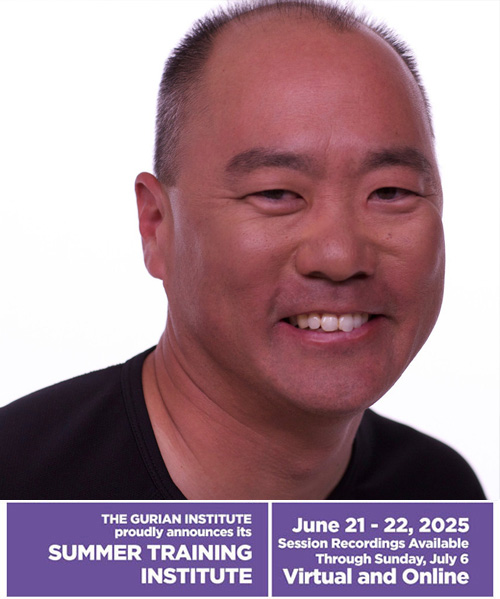Abigail Wald, Gurian Certified Trainer and founder of motherflippingawesome.com, provided a powerful workshop at our Summer Training Institute, June 22 -23, at Army and Navy Academy, in Carlsbad, CA last weekend. For this workshop, she also wrote a powerful blog post we are publishing here.
She began her blog post with lyrics from the musical, Dear Evan Hansen, about a young man with social anxiety having to navigate the socially stressful landscape of high school. The lyrics hauntingly depict his sense of feeling like no one supports him; he feels forgotten, in the middle of nowhere; he feels that if he disappeared, no one would notice; if he fell, no one would hear the fall. Abigail continues….
Most of us have experienced some form of anxiety, worry, or emotional darkness at some point. For some of us it’s fleeting and based on temporary circumstances. Yet for others of us it becomes an internal and eternal state of being, like a room you somehow walked into and now can’t find the doorway out of. If I had to categorize my own relationship with worry, I’d say it’s been a long and complicated friendship of sorts. I have had good reason to worry in my life; I had a pretty worrisome childhood. My personal ACES score (a number you get based on the amount of Adverse Childhood Events you have experienced) is so close to 100 percent “yes” that it actually looks more like a test I tried to “ace” than what it really is: one of the few tests you actually hope to get a zero on.
But interestingly I have thrived. Why is that? It is a question that I have pondered for years. Ultimately I think it is one of the most important questions we can ask ourselves as a society. We will all face setbacks, disappointment, and fear. What is it that allows some of us to fight back and win? There is no one answer of course, and there is no magic line as to what pain becomes unbearable for some and yet barely registers for others. So rather than spend time defining why we worry, or what makes us worry, I’d like to focus in this moment on what we can DO about it when find ourselves worrying – and how it is that we can get more of us winning against worry.
I ask this question for myself. And I ask it for the sake of my children.
Today’s children are suffering from psychological distress at rates that, frankly, should cause the rest of us psychological distress. A recent study based on data collected from more than 600,000 people by the National Survey on Drug Use and Health (an annual nationwide mental-health survey conducted by a branch of the U.S. Department of Health and Human Services) concludes that “Between 2009 and 2017, rates of depression among kids ages 14 to 17 increased by more than 60%. The same trends held when the researchers analyzed the data on suicides, attempted suicides and “serious psychological distress”—a term applied to people who score high on a test that measures feelings of sadness, nervousness and hopelessness.”[2]
What makes for this potent cocktail of emotions, and these devastating numbers? It couldn’t really be that our genetics have changed so much so suddenly. Is it the food supply? The environmental pollution? The pervasive tech in our pockets?
I will not be the one to answer this problem. Sorry.
But I do want to offer a few rays of hope amidst the unsettling news.
Because while worry, anxiety, and sadness will always be a part of human life, they don’t have to inexorably lead to panic attacks, depression, and suicide. And while love and genuine human connection will never be all that is needed to save ALL of us, it might be enough to save MOST of us.
Whether our children are the ones we are raising at home, or the students in our classrooms, how we connect with them in certain critical moments may be more crucial than we realize.
I believe there are five core things we can do right now to help our children begin to see themselves as capable of living through hard experiences and thriving:
* We must learn to seek out the difficult and inconvenient truths of life, share them with our kids, and even embrace them with joy. Sometimes we shy away from the complexities of the world in the name of protecting our kids, but I wonder if when we do this, perhaps what we are really communicating to our children is our own worry that they might not be able to handle difficulty and honesty. Instead, I believe we should stop hiding from these inconvenient truths, court them instead, and then model resilience and the ability to relish a challenge even in the face of fear. Normalizing difficulty helps rebalance the Pinterest boards of life. You can do this by focusing on how many shots Steph Curry misses, or by telling the kids in your life some deeply honest stories of your own personal struggles. They need to know they aren’t the only ones having a hard time sometimes.
*Help them get early wins in life. Early is the key word here. As soon as possible, we need to get kids winning. At something. At anything. Let them feel the challenge and do just enough to help them overcome it, but with their own power as the main force. This can be built by playing wrestling games with your children when they are younger. Let THEM win, even as you “struggle” to. Or, for your students, delight in THEIR solutions to problems. Let THEM teach YOU. Revel in how they see the world and how different it is from your adult viewpoint. Help each child in your life find at least one thing they love to do, and that makes them feel valuable.
*Teach them how to write their own stories. These don’t ever need to be written in ink. But teaching children the skills needed to re-author their own experiences can be vitally important. I believe there are two stories each of us can tell about our lives. There is what happened to us, and then there is the story we TELL ourselves about what happened to us. The first matters, but the second matters more, because it is the one that conveys the MEANING. Luckily for us, we may have no power over the first, but we can rewrite the second one as many times as we need to, until we are authoring – and living – the story we want to be telling.
*Make sure our kids have a WHY that is strong enough. Their own “why,” not ours. If a child isn’t connected to their “why” they won’t find their “how.”
*We have to know the truth about what anxiety looks like, in ALL its many forms. When we think of worry, we often imagine a child who is acting scared, or timid, or obviously needing help. In reality, anxiety can sometimes mimic drowning in that it can happen right in front of our eyes without us even noticing. It doesn’t always look like we think it should. Sometimes, it might look like an obsession with one’s peers, body image issues, professed boredom, anger, apathy, depression, bullying, withdrawal, perfectionism, inflexibility, or stoicism. It helps if we adults know the signs, and how to help our children when we see these markers, or find someone else who can help.
At the Gurian Summer Institute, I shared a personal story of my own son who has been through several open heart surgeries since birth, and as a result tends to have anxiety about venturing far from home on his own. His first attempt to go to sleep-away camp went quite awry, but by practicing the first principles I’ve just described, we ultimately got him to go and love it.
This is a story of fear, anger, love, and ultimately of great bravery. The bravery was his–but he, like everyone, needed people in his corner who “got” him, accepted him, and were even willing to sometimes save him from his himself–at least the part of himself that were his own dark fears.
Note. Statistics come from: https://time.com/5550803/depression-suicide-rates-youth/










